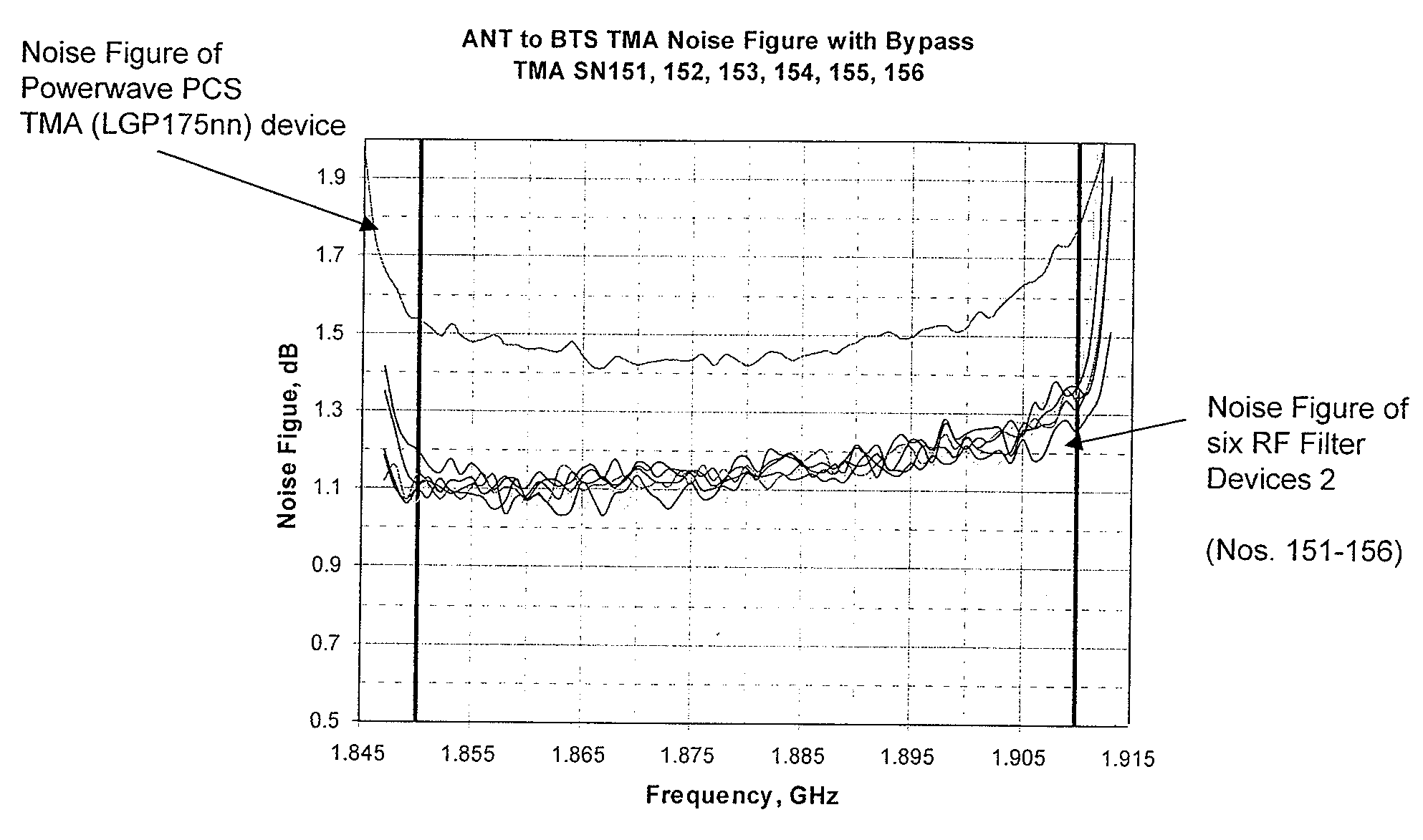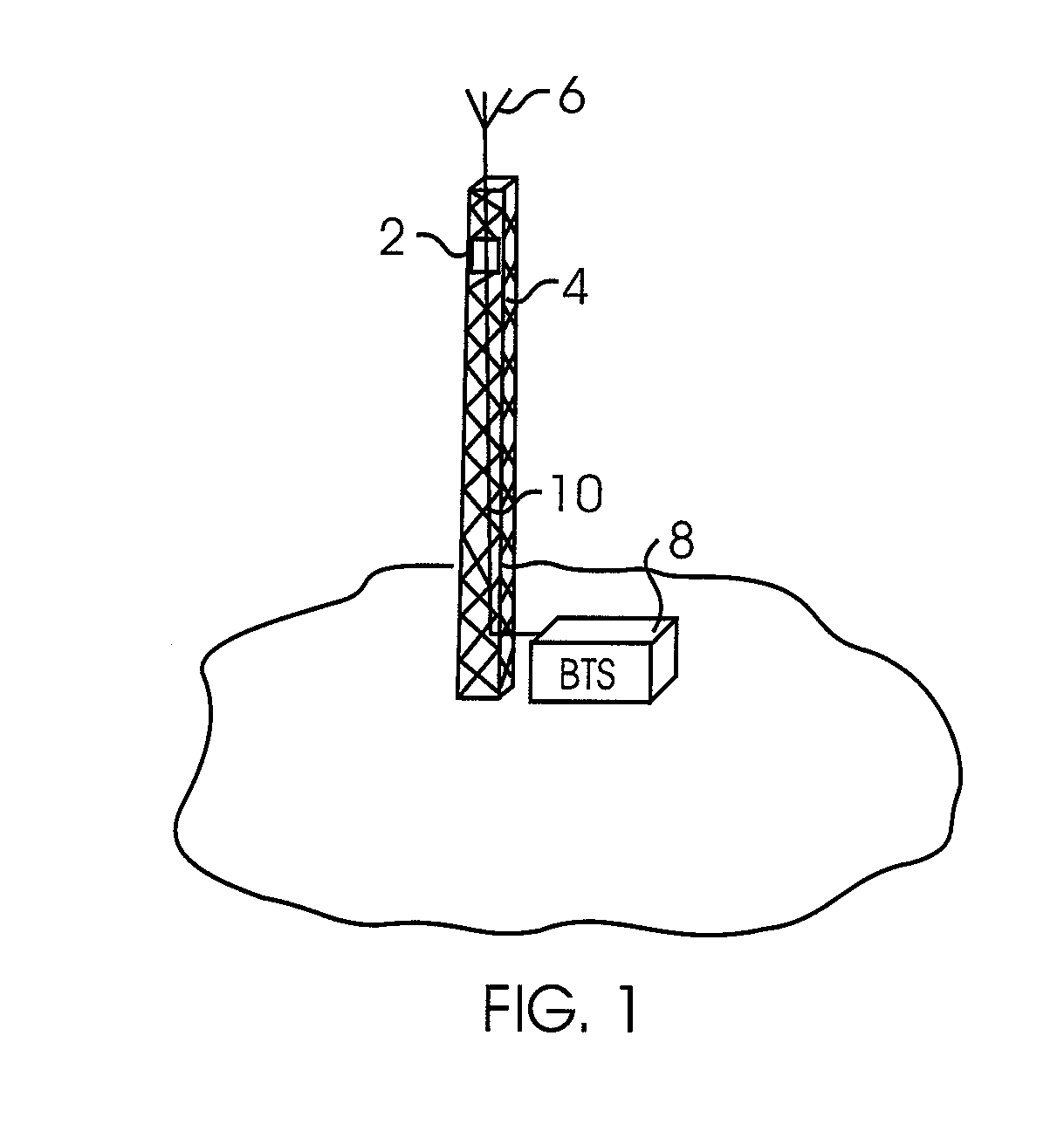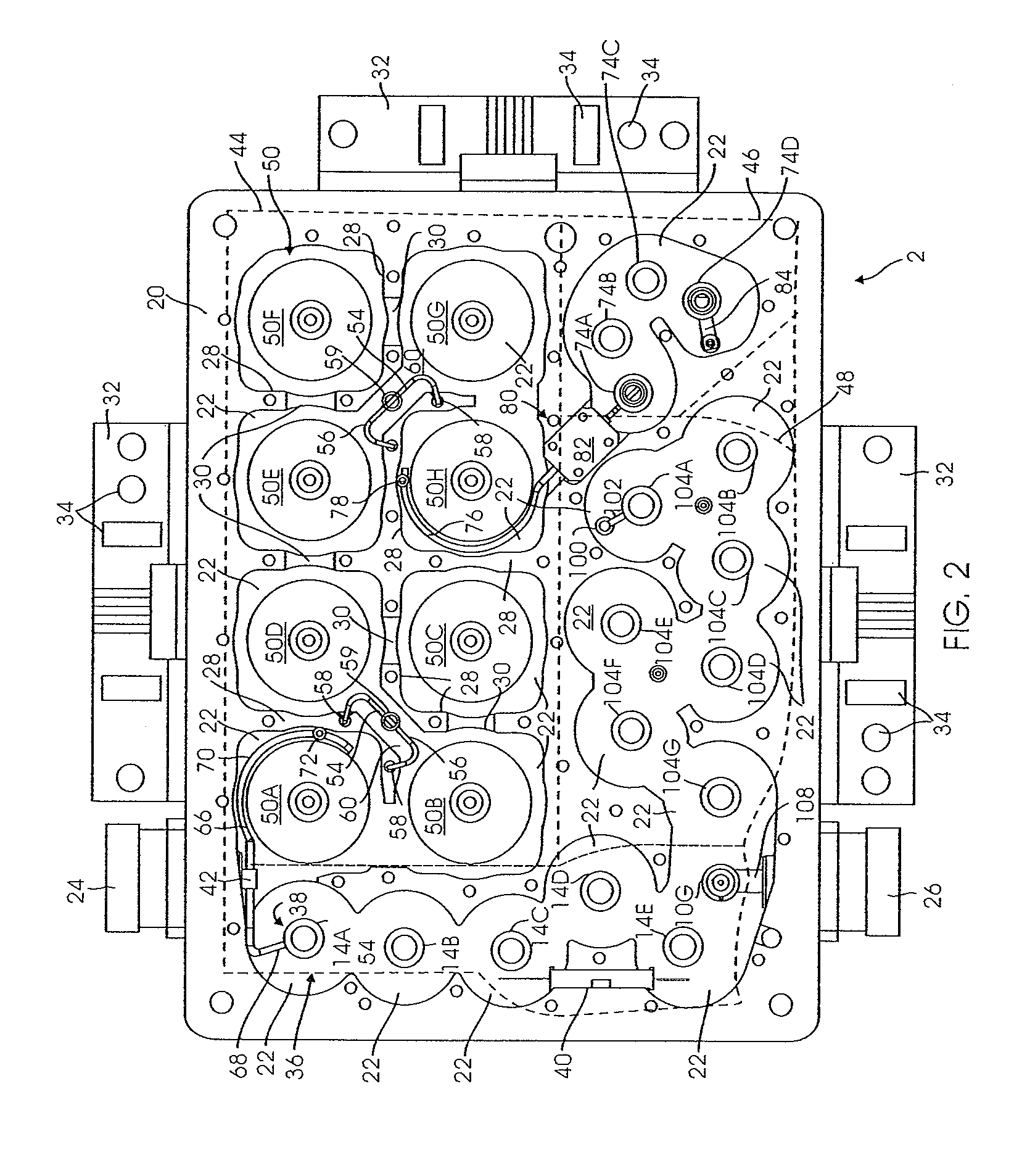Low noise figure radiofrequency device
a radiofrequency device and low noise figure technology, applied in waveguide type devices, frequency-modulated carrier systems, digital transmission, etc., can solve the problems of difficult to produce large couplings necessary for the relatively wide bandwidth described above, and achieve the effect of low noise figur
- Summary
- Abstract
- Description
- Claims
- Application Information
AI Technical Summary
Benefits of technology
Problems solved by technology
Method used
Image
Examples
Embodiment Construction
[0028]FIG. 1 illustrates a typical layout for an RF device 2 (e.g., TMA, MHA, and TMB). The RF device 2 may include filter and / or amplification functionality. The RF device 2 is disposed on a tower 4 or other elevated structure adjacent to an antenna 6. The RF device 2 is coupled to the antenna 6 and a base station (BTS) 8 via coaxial cable 10. The RF device 2 may be powered by a separate power line (not shown) or, alternatively, the low noise amplifier (LNA) and any other electronics may be powered through current provided in the coaxial cable 10. In one aspect, the RF device 2 is located on the tower 4 within ten feet of the antenna 6. In still other embodiments, the RF device 2 is located within six or even less than three feet of the antenna 6. The closer the RF device 2 is positioned adjacent to the antenna 6, the smaller the insertion loss created by the cabling connecting the RF device 2 to the antenna 6. In another alternative aspect of the invention, the RF device 2 is inte...
PUM
 Login to View More
Login to View More Abstract
Description
Claims
Application Information
 Login to View More
Login to View More - R&D
- Intellectual Property
- Life Sciences
- Materials
- Tech Scout
- Unparalleled Data Quality
- Higher Quality Content
- 60% Fewer Hallucinations
Browse by: Latest US Patents, China's latest patents, Technical Efficacy Thesaurus, Application Domain, Technology Topic, Popular Technical Reports.
© 2025 PatSnap. All rights reserved.Legal|Privacy policy|Modern Slavery Act Transparency Statement|Sitemap|About US| Contact US: help@patsnap.com



